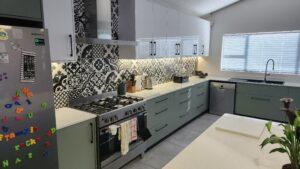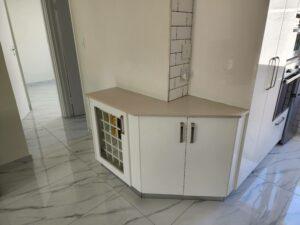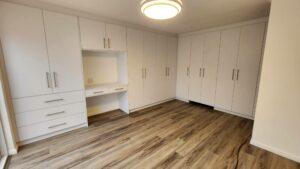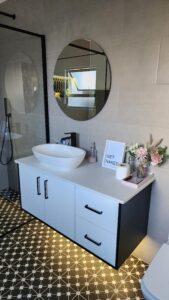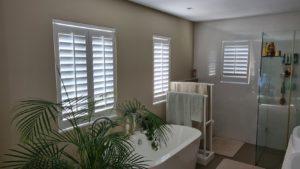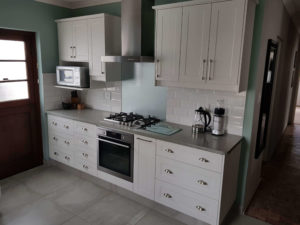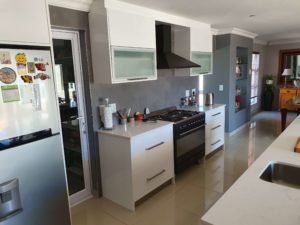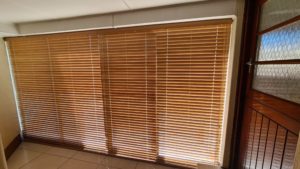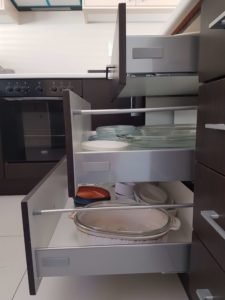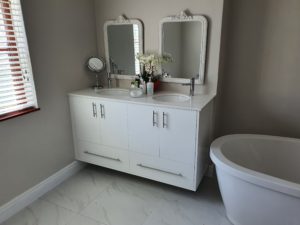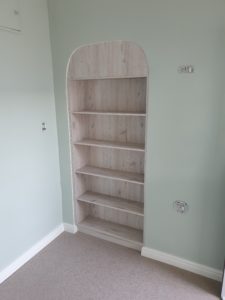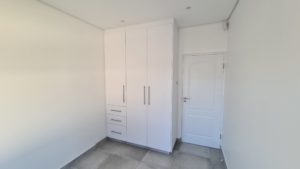When it comes to home renovations, installing built-in cupboards can be a great way to increase storage space while also adding value to a home. However, the cost of installation can quickly add up, making it important to budget properly. By taking the time to plan and research, homeowners can save money while still achieving the desired look and functionality of their built-in cupboards.
One of the first steps in budgeting for a built-in cupboard installation is to determine the scope of the project. This includes deciding on the size and style of the cupboards, as well as any additional features such as lighting or custom hardware. Homeowners should also consider the materials they want to use, as this can greatly impact the overall cost of the project. While hardwoods like oak or cherry will be more expensive, they can also offer a higher quality and longer lifespan than cheaper alternatives like MDF.
To further save money on a built-in cupboard installation, homeowners can consider a variety of tips and tricks. This may include opting for pre-built cabinets (which we don’t recommend) rather than custom designs, using open shelving instead of closed cabinets, or refinishing existing cabinets instead of replacing them entirely.
Additionally, homeowners can save money on labour costs by doing some of the work themselves, such as removing old cabinets or installing hardware. By combining these strategies, homeowners can create a budget-friendly plan for their built-in cupboard installation while still achieving a high-quality and functional end result.
Why Budgeting is Important when Deciding on Built-in Cupboards
Budgeting is an essential aspect of any project, including built-in cupboard installation. It helps to ensure that the project stays within the allocated budget and prevents overspending. By setting a budget, you can plan your expenses and allocate funds to different aspects of the project, such as materials, labour, and any unforeseen expenses that may arise.
Without a budget, it can be challenging to track expenses and manage costs. This can lead to overspending and eventually, a project that is not completed due to a lack of funds. By setting a budget, you can avoid these issues and ensure that your project is completed within the allocated budget.
Another reason why budgeting is important is that it helps to prioritise expenses. By allocating funds to different aspects of the project, you can determine which expenses are essential and which ones can be cut back. This can help to prevent overspending and ensure that the project is completed.
What we have found at Bespoke Designs is that our clients benefit from an incredibly detailed quote. We can quote you down to the last screw if you need to. This allows for pricing transparency, although most clients aren’t too bothered.
Overall, budgeting is an essential aspect of any project, including built-in cupboard installation. It helps to ensure that the project stays within the allocated budget, prevents overspending, and prioritises expenses. By setting a budget, you can plan your expenses and ensure that your project is completed successfully.
Factors to Consider
Before embarking on a built-in cupboard installation project, there are several factors that homeowners should consider. These factors include size and style, materials, and labour costs.
Size and Style
One of the most important factors to consider when budgeting for a built-in cupboard installation is the size and style of the cupboards. The size of the cupboards will depend on the available space in the kitchen and the homeowner’s storage needs. Homeowners should take accurate measurements of the space where the cupboards will be installed to ensure that they choose the right size of cupboards.
We have a tendency to provide estimated, provisional quotes based on your figures. However, we do tend to do our own measurements as well to ensure quotation accuracy.
The style of the cupboards is also an important consideration. Homeowners should choose a style that complements the overall design of the kitchen. Some popular styles include traditional, modern, and rustic.
Materials
The materials used to construct the cupboards will also affect the overall cost of the project. Homeowners should choose materials that are durable and long-lasting. Some popular materials for built-in cupboards include hardwood, MDF, and Melamine. Hardwood is the most expensive option, but it is also the most durable. MDF and Melamine are less expensive options, but they are still durable and long-lasting.
Homeowners should also consider the finish of the cupboards. A wrapped or painted finish will add to the overall cost of the project, but it will also enhance the appearance of the cupboards.
Labour Costs
The cost of labour is another important factor to consider when budgeting for a built-in cupboard installation. Homeowners can save money by installing the cupboards themselves, but this is only recommended for those who have experience with DIY projects. For those who are not experienced with DIY projects, it is best to hire a professional installer. The cost of labour will depend on the complexity of the project and the experience of the installer.
Homeowners should also consider additional costs such as demolition and disposal of old cupboards, electrical and plumbing work, and any necessary council approvals.
Tips for Sticking to Your Budget
When it comes to budgeting for your built-in cupboard installation, it can be easy to get carried away and overspend. Sticking to your budget is crucial to ensure that you don’t end up with a hefty bill that you can’t afford.
Here are some tips for staying within your budget:
Research and Compare Prices
One of the most effective ways to stick to your budget is to research and compare prices before making any purchases. This will help you find the best deals on materials and labour, and ensure you are not overpaying for anything.
You can use online resources such as home service directories or just Google to find local contractors and compare their prices. Additionally, you can check out home improvement stores like Brights or builders warehouse to compare prices on materials. It is, however, important to know that certain things like handles and hinges vary greatly in terms of brands and quality.
Prioritise Your Must-Haves
When creating your budget, it’s important to prioritise your must-haves. This means identifying the essential features and materials needed for your built-in cupboard installation. By prioritising your must-haves, you can allocate your budget accordingly and avoid overspending on non-essential items.
You can create a list of your must-haves and use it as a reference when making purchasing decisions. This will help you stay focused on your priorities and avoid getting sidetracked by unnecessary expenses.
Be careful with pre-made cabinets
If you’re handy with tools and have some DIY experience, you may be able to save money by doing some of the work yourself. For example, you could install the shelves or paint the cupboards yourself instead of paying a contractor to do it.
However, it’s essential to be realistic about your skills and abilities. If you’re not confident in your DIY skills, it may be better to hire a professional to avoid making costly mistakes. We have also found that pre-made cabinets are built “cheaply” with inferior quality materials.
Leave Room for Unexpected Expenses
Finally, it’s important to leave room in your budget for unexpected expenses. No matter how well you plan, there may be unforeseen costs that arise during the installation process.
Leave some wiggle room in your budget. By doing this you can ensure that you have the funds to cover any unexpected expenses without going over your budget.
By following these tips, you can stay within your budget and ensure that your built-in cupboard installation project is a success.
Conclusion
Installing built-in cupboards can be a significant investment, but with careful planning and budgeting, it can be a worthwhile addition to any home. By taking the time to research materials, design, and installation options, homeowners can create a functional and stylish storage solution that fits their budget.
One of the most important considerations when budgeting for a built-in cupboard installation is the cost of materials. Homeowners should research different types of wood, hardware, and finishes to find options that fit their aesthetic preferences and budget. Additionally, they should consider the cost of installation, which can vary depending on the complexity of the project and the experience of the installer.
Another key factor to consider when budgeting for a built-in cupboard installation is the design of the cupboards. Homeowners should work with a designer or contractor to create a plan that maximises storage space while minimising costs. This may involve choosing a simple design or using creative solutions to make the most of the available space.
Finally, homeowners should be prepared to make trade-offs when budgeting for a built-in cupboard installation. While it may be tempting to splurge on high-end materials or custom features, doing so can quickly drive up the cost of the project. Instead, homeowners should focus on finding a balance between functionality, style, and affordability.


